 While it’s always been important to keep our dogs free of insects due to the puppy’s discomfort, it’s critical today. The diseases that attack both humans and dogs have grown to be more dangerous as time moves on and our changing climate brings new diseases from the tropics to temperate climates that affect our dogs adversely.
While it’s always been important to keep our dogs free of insects due to the puppy’s discomfort, it’s critical today. The diseases that attack both humans and dogs have grown to be more dangerous as time moves on and our changing climate brings new diseases from the tropics to temperate climates that affect our dogs adversely.
How important is flea and tick prevention?
When you finish this post you’ll understand that it is of great importance, especially today when new diseases are coming at us and our pets every year. Your pup feels pain in his own way, some like we do and some completely different.
The tick diseases that affect both dogs and humans
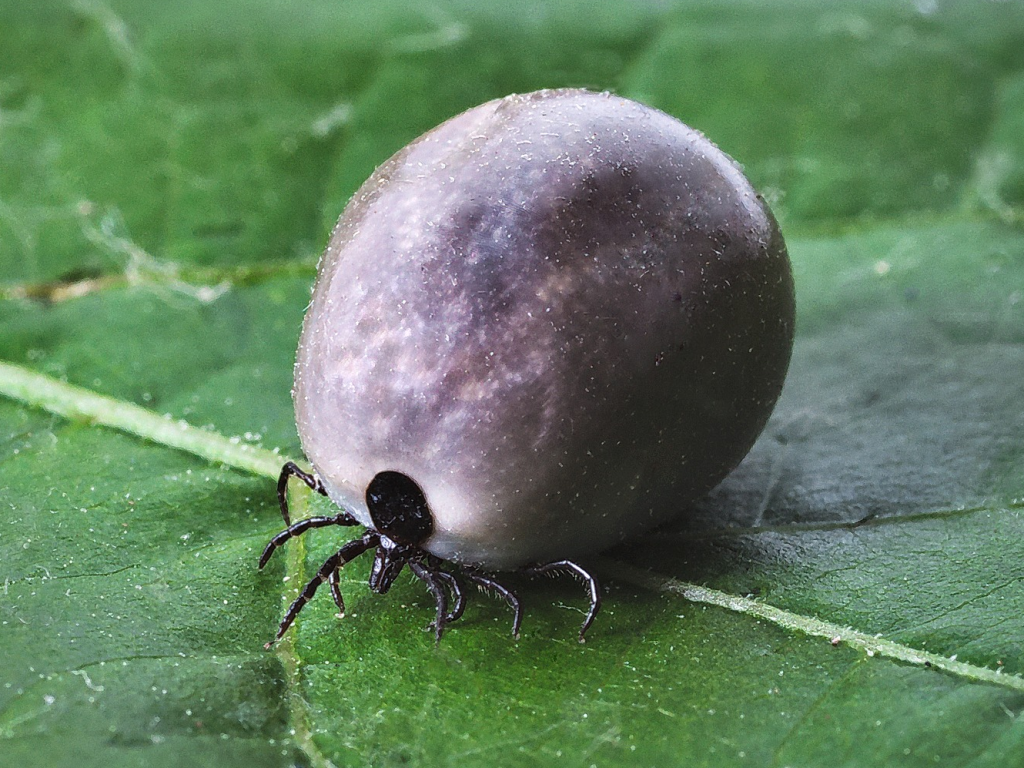
These diseases are more dangerous every year. More people and pups are getting sick due to these diseases every year.
First is Lyme disease or Borreliosis. This is caused by the Borrelia burgdorferi.bacteria which is transmitted by deer ticks. These ticks need to be attached for about 48 hours to transmit the disease so one very good practice is to check yourself and your dog for ticks when ever you come home from an outdoor adventure. Symptoms include swollen lymph nodes, fever, lameness, and joints, and a reduced appetite. You should have your dog vaccinated yearly for this disease.
Then we have Rocky Mountain Spotted Fever (RMSF). The tick that transmits this disease are primarily from the Midwest, East, and Plains states. It is carried by the Rocky Mountain spotted fever tick and the American dog tick. The tick has to be attached for around 5 hours for transmission to occur. This means that checking your dog and yourself after every excursion can still stop the transmission of this disease.
Tick diseases that will only affect your dog

There are a number of these with various methods of prevention and treatment available.
- American canine hepatozoonosis (ACH) is first on this list. This disease is usually very severe, and it is often fatal. If your pup eats an infected animal he can catch this disease. Fortunately it is fairly rare.
- Babesiosis. protozoa causes Babesiosis. These are single celled animals that gets into the red blood cells and cause anemia.
- Rabbit fever or tularemia is another disease that affects dogs from tick bites. Reduced appetite, depression, and a mild fever are some of the symptoms.
- Haemobartonellosis. The symptoms are usually mild so this disease is difficult to diagnose. The symptoms are anemia and weakness.
- Tick paralysis is from a toxin that is passed on by ticks. About a week after being bitten a dog will start so show symptoms and become weak and limp. It usually starts with weakness in the rear legs, slowly includes the front legs, and may continue until difficulty breathing and swallowing becomes a problem. There is an antitoxin available so if you see these behaviors, get to a vet ASAP.
- Deer ticks and western black-legged ticks can cause canine anaplasmosis. Brown dog ticks can also carry this disease. Symptoms are similar to ehrlichiosis. They include fever, pain in the joints, diarrhea, vomiting, and nervous system disorders.
- Ehrlichiosis. The Lone Star tick and brown dog tick transmit this disease. Symptoms show up after a month and consist of stiff and painful joints, reduced appetite (anorexia), depression, fever, and bruising.
What is the safest flea and tick prevention for dogs?
Safety in flea and tick medication is a double-edged sword. On one hand you want to protect your pup considering how troubling these diseases are. On the other, you don’t want to poison your pet with chemicals that can cause severe reactions, or even cancer in the long run.
While the EPA says it’s intensifying its investigation of topical flea and tick medications, I don’t believe everything it tells us, considering what the EPA has done with it’s mandate in the last couple of years. We must assume that the companies making the products are marketing them to us with the advancement of their shareholders in mind first and foremost. Then, we must acknowledge that the federal government is lowering the standards for all kinds of food and medications not only for pets, but also for humans.
We need to compare everything from side effects to reviews and ratings to come up with an idea of how safe the product you’re using is. This requires some effort on your part but the research will be worth the trouble.
A lot of safety has to do with what you think is best.
That means there are no shortcuts. You need to research everything you can and come to an informed conclusion. Myself, I feel comfortable using collars such as Seresto, topicals such as Frontline Plus, and an oral such as Nexgaard. All of these specific treatments have worked for my dog with no problems. We are in the woods almost every day and she has had no trouble at all with fleas or ticks.
Don’t forget that after you have purchased the treatment you want you will need to keep an eye on your pup to be sure he doesn’t have an allergic reaction. If he acts differently in any significant way you should take him to see your vet.
Which flea and tick prevention is best for dogs?
Finding the best flea and tick prevention is rather complicated. There are not only many products but there are different categories of products as well. These categories use different ways to administer the medicine that affects dogs in different ways. For instance, a flea and tick collar would need to be water resistant if your dog swims a lot, but oral medications won’t have this problem at all.
Using a collar to prevent fleas and ticks
Collars have some advantages. They’re usually good for 3-12 months depending on the brand so you don’t have to deal with it every month. There are some collars that work when the dog swims a lot, but you’ll need to read the instructions to find that.
I’ve tried some different flea and tick prevention collars and I found some that work quite well.
Seresto makes the most acclaimed collar.
The large dog version runs $70-90 so it will cost you around 9 bucks a month. While that isn’t as cheap as some, it tends to be more inexpensive than the oral solutions on the market. It is supposed to continue to work even after being immersed in water so your dog swimming shouldn’t affect it. You should keep an eye out from 4 months on to see if swimming has shortened it’s life.
Spectra Shield
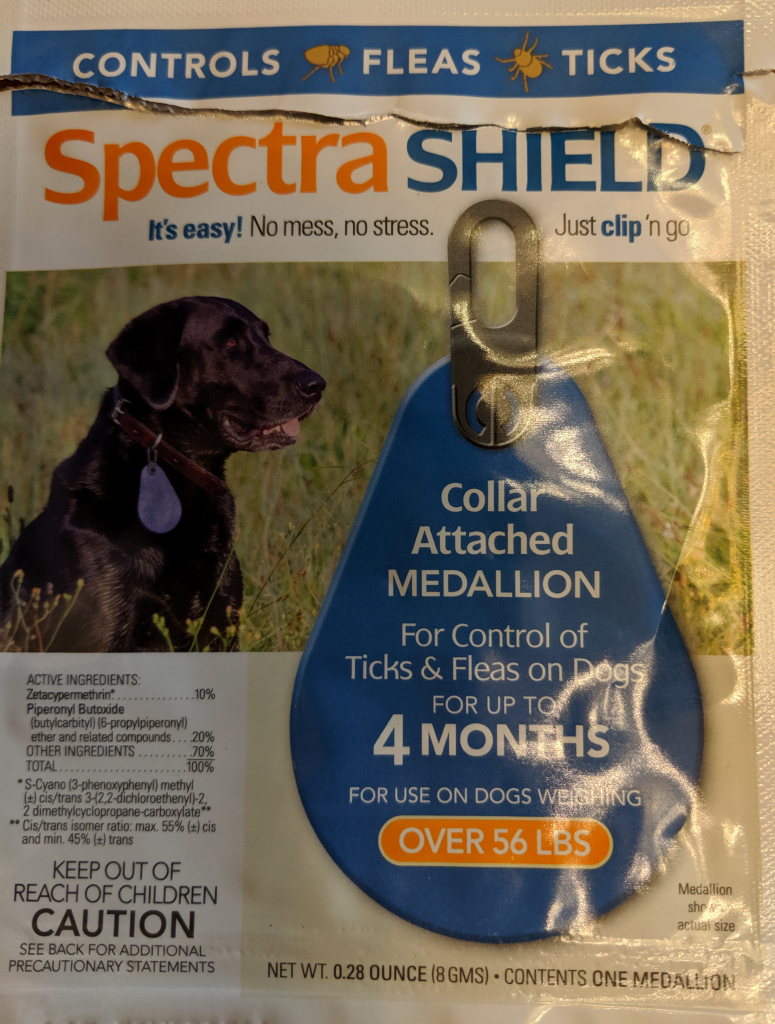
I purchased this because it is a tag hanging from a collar and I thought it might work even better than a collar. It’s not water resistant so you need to watch the swimming, if needed. It’s good for 4 months. One problem is that the large dog version is big enough to attract other dogs that are playing to bite it. That concerns me that the dog biting it could get sick from the chemicals. If your dog doesn’t play with others, this could be the best answer for you. This method is easy, convenient, and inexpensive. It just depends on your dogs behaviors and environment.
Topical flea and tick prevention is a very good solution
Most of them are only good for a month and they do have to be applied carefully but once dried it is out of the way until next month. The best ones are quite effective and do a good job. Watch out for skin allergies near the location where you apply the product. I’ve tried a few topicals and while I feel a need to be careful with the application, I’ve had no trouble and they seem to be quite effective.
Frontline Plus does a very good job.
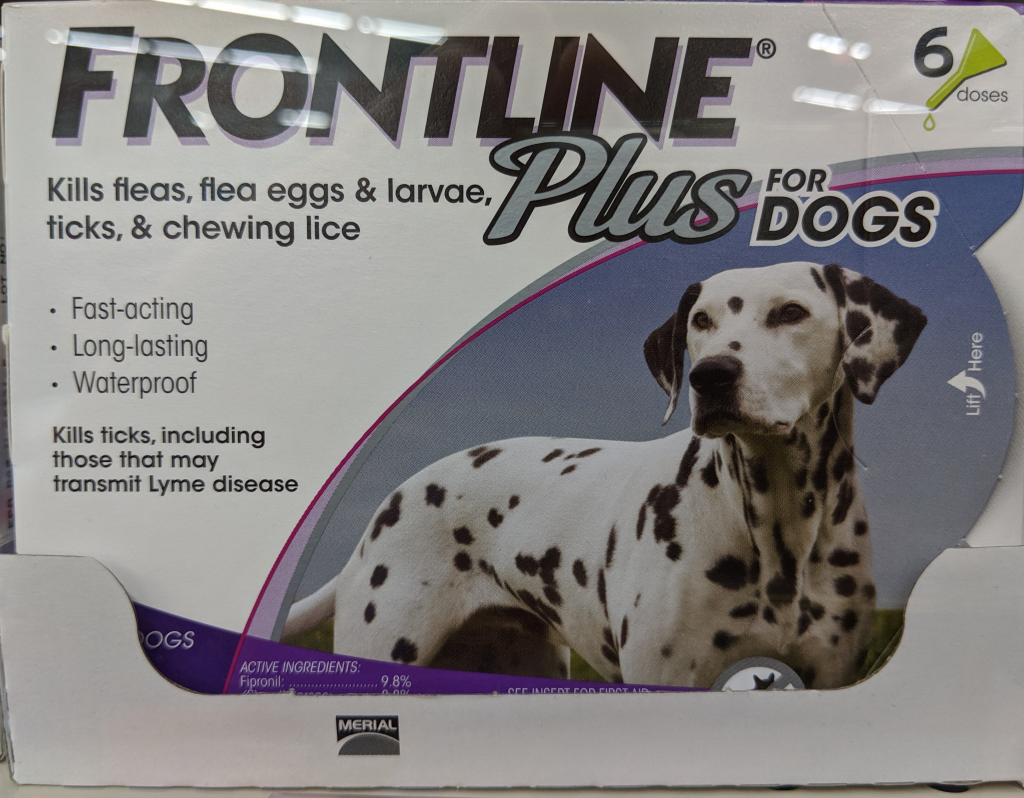
I’ve personally had a lot of success with this one. Over the years I’ve used it on 5 dogs with no noticeable problems. I have seen zero ticks and fleas when my pup was wearing this. You can put it on your dog on the back of the neck where he can’t lick it off. You will need to put the applicator directly on the skin through the fur to be sure that it is absorbed properly, but it’s not particularly difficult. Just take reasonable care.
K9 Advantix

Definitely a well respected alternative. I have not tried this but I have read quite a bit about it and if my present solution started to cause problem such as allergic reactions, this would probably be the next product I would try.
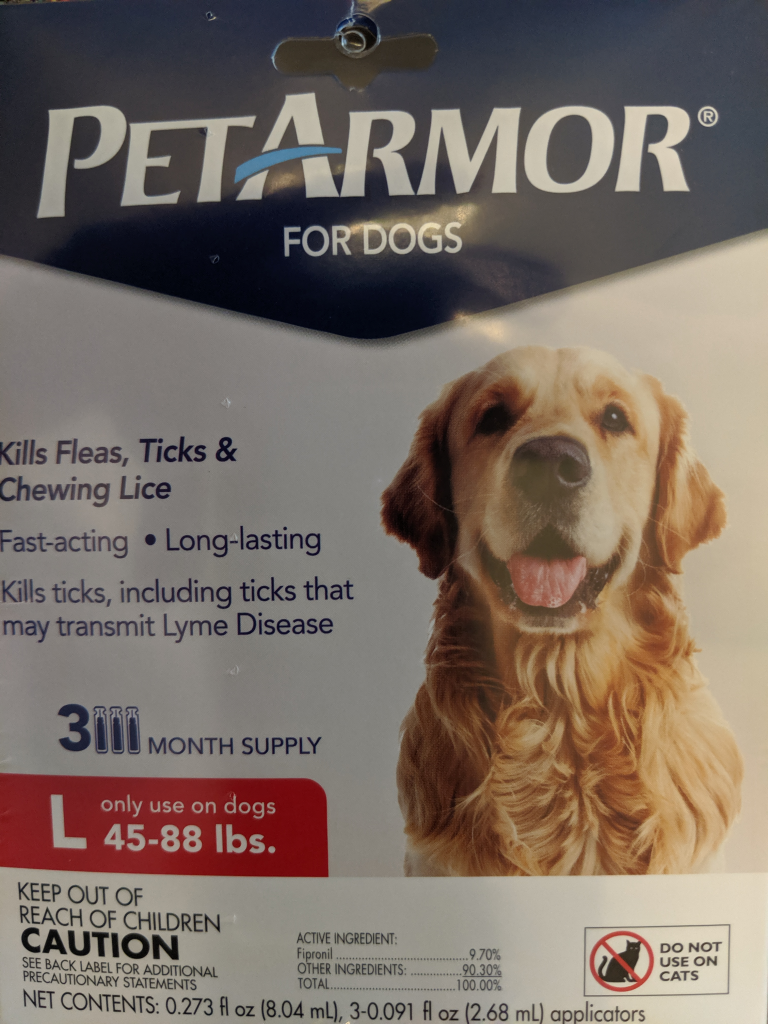
Pet Armor Plus
Pet Armor is a lower cost alternative to Frontline. It is a solid product with good protection against fleas, ticks, and chewing lice.

Advecta 3
This products offers a lower cost alternative to K9 Advantix. In fact, they use the same chemicals. If you find K9 Advantix effective, you may want to try this lower cost solution.
Oral Flea and tick prevention
Oral treatments tend to be the most expensive, but it’s easy, and puts you in a “no mess no fuss” situation. You do need to remember to give the med once a month, but if your dog takes the chewable OK, it’s a non-event. Watch for allergic reactions, but if your dog doesn’t have any problems and you can afford it, you should be in a very good place.
Nexgard

Nexgard is one of the best known of the oral medications. I’ve used this on my pup a number of times but unless you get a sale price, it’s really expensive. I use Heartgard for heart worm prevention, so I just add Nexgard to a chore I’m doing anyway. At full price, it runs around 30 bucks a month. To me, that’s just another drug company taking advantage, so I don’t use it unless I get a price break. However, the company does offer price breaks periodically. In fact, I just purchased a years supply. If you buy Nexgard and Heartgard together for the entire year, there’s a $60.00 discount for both which brought the price for both medications down to around $17.00 per month.
My dog takes the chewables happily so it’s extremely convenient to give 2 meds at the same time every month. This is a prescription medication so you will need a prescription from your vet.
Trifexis
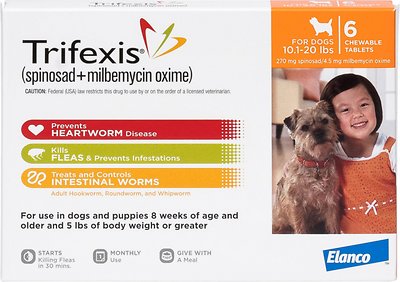
Trifexis not only protects against fleas, but it also protects against heart worm. It is very cost effective and again really easy to use. Just remember to give Fido a dose at the beginning of each month and you’re good. The problem with this is that it doesn’t protect against ticks. Since tick protection has become extremely important in the last few years, you’ll need to address this with an additional medication.This is a prescription medication so you will need a prescription from your vet.
What are the side effects of flea and tick prevention?
Of course side effects are different for every medication, so you’ll need to read the label before use. We divide side effects into four groups based on the kind of reaction. Many reactions are difficult to see, especially when most dogs are very stoic about their pains and don’t like to show discomfort.
- Allergic reactions consist of hives, congestion, itching, extreme sensitivity, shock, respiratory distress, death (which is very rare)
- Idiosyncratic reactions resemble toxic reactions but at much lower doses
- Mild reaction – ear twitching, excessive salivation, paw flicking, mild depression, vomiting, and diarrhea.
- Moderate to serious reaction will show incoordination, protracted vomiting and diarrhea, depression, muscle tremors (which will be different from paw flicking and ear twitching.
How to make natural flea and tick prevention for dogs

First, you need to know that soap and water kills fleas. Just leave the lather on your dog for 3-5 minutes and you don’t need toxic chemicals. Of course, you can’t use this as your primary defense because you’ll dry out your pooches’ skin if you bathe him too often. Add a dropper or two of essential oils (citronella, lavender, pennyroyal, eucalyptus, etc.) to their bath, and you’ll have a decent, non-toxic repellent.
You will need a good flea comb. Even if you kill all the fleas on your pup, their larvae can survive and grow into fleas. Go over your pup with a flea comb every few days will give Fido the relief he deserves.
How do I find and remove ticks on my dog?
Ticks often attach themselves in hidden areas. Be sure to check your dogs ears, shoulders, and belly.
When you find a tick, grab some fine-tipped tweezers, grasp the tick as close to the skin as possible, and pull with steady, even pressure.
After you remove the tick, wash the area, and your hands with rubbing alcohol, an iodine scrub, or at least, soap and water.
How can I make a DIY, natural flea and tick treatment?
- Thinly slice a lemon and place it in a quart of boiling water to steep overnight.
- Pour the lemon water into a large glass spray bottle and add 10 drops of lemongrass oil, 10 drops of Citronella oil, 1 cup of vinegar and a few drops of clove or cedarwood oil.
- Store the treatment in the refrigerator and spray your dog’s coat once a week.

3 comments for “How Important is Flea and Tick Prevention for Dogs?”